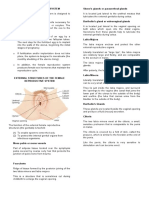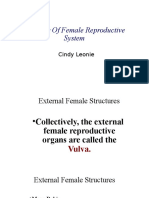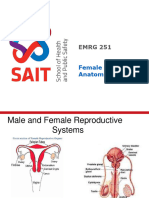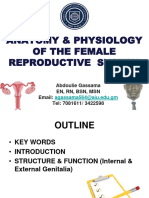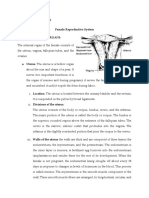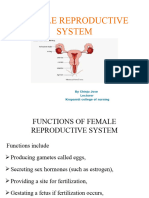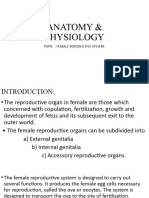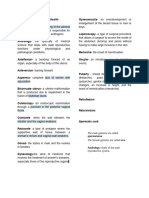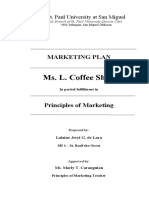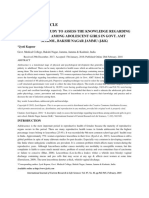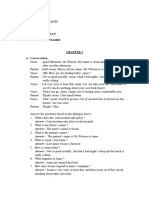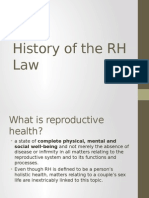0% found this document useful (0 votes)
120 views22 pagesFemale Reproductive System
The female reproductive system includes external structures like the vulva and internal structures like the uterus and ovaries. The external structures receive sperm and protect the internal organs, while the internal structures are responsible for reproduction. Four major hormones regulate the menstrual cycle and female anatomy includes organs like the uterus, ovaries, fallopian tubes, vagina, and mammary glands.
Uploaded by
amielle azamingCopyright
© © All Rights Reserved
We take content rights seriously. If you suspect this is your content, claim it here.
Available Formats
Download as PDF, TXT or read online on Scribd
0% found this document useful (0 votes)
120 views22 pagesFemale Reproductive System
The female reproductive system includes external structures like the vulva and internal structures like the uterus and ovaries. The external structures receive sperm and protect the internal organs, while the internal structures are responsible for reproduction. Four major hormones regulate the menstrual cycle and female anatomy includes organs like the uterus, ovaries, fallopian tubes, vagina, and mammary glands.
Uploaded by
amielle azamingCopyright
© © All Rights Reserved
We take content rights seriously. If you suspect this is your content, claim it here.
Available Formats
Download as PDF, TXT or read online on Scribd
/ 22







